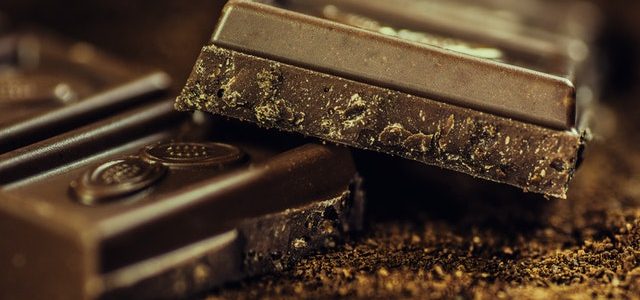Chocolate – or cacao as it is more commonly known – contains many powerful antioxidants. Antioxidants are substances that defend the body against free radicals, chemicals caused by external stimuli that can damage cellular DNA. They are produced inside the body and released into the bloodstream. The higher the concentration of antioxidants in your blood, the better your chances of avoiding disease and injury.
Unlike the saturated fats in butter, cacao has a neutral impact on LDL cholesterol. Furthermore, the antioxidants in chocolate contain polyphenols, powerful compounds that occur naturally in green and dark fruits and vegetables and are thought to fight the destruction of human cells and DNA. In addition to helping the body to fight disease-cells, the antioxidants in chocolate also appear to protect arteries from blockage. This would otherwise allow this viscid, gooey substance to adhere to artery walls, causing the increased risk of a stroke or heart attack.
The antioxidants in chocolate that make it so appealing to most people are the powerful flavonoids that give it its characteristic sweet taste. Of the flavonoids, epicatechin is the one of the more popular. This chemical is also known as catechins and has been found in black and green teas, although scientists discovered the health benefits of this compound in cacao years ago. Scientists now have learned that the chemical, along with a handful of other closely related substances, make chocolate drinkers healthier.
One of the antioxidants in chocolate that scientists are particularly excited about is epicatechin. This compound has a special role in the human brain, preventing cell death and promoting brain health. It appears to be an effective model for combating age-related memory loss and may even protect against some forms of Parkinson’s disease. In experiments with mice and rats, scientists found that the antioxidants in chocolate could protect against degeneration of the spinal cord, the major cause of memory loss in old age. These findings suggest that making chocolate part of your diet can be very beneficial to your brain health.
But scientists aren’t quite ready to claim that it is the chocolate that makes you healthy. They are, however, excited by the many other compounds that are contained in this small, dark, crave-satisfying treat. For example, the antioxidant polyphenols are present in the cacao bean, making it one of the most important sources of antioxidants in the world. Many of these compounds work by preventing the oxidation of low-density lipoprotein, which is the type that forms plaque in arteries. Other compounds prevent the entry of free radicals into cells. And still others act as a chelation agent, helping to rid the body of harmful heavy metals such as lead.
While scientists have coined the phrase “antioxidant-rich” to describe various nutrients and chemicals that they believe are necessary for good health, it is still not completely clear what these compounds are and how they benefit our bodies. For that reason, it is still a wise idea to consume foods and beverages from a variety of different food groups and vegetables in order to achieve the greatest nutritional value. Antioxidant-rich fruits and vegetables are readily available, making chocolate consumption on a regular basis an important part of a healthy diet.
Among the most interesting health benefits of cacao beans is their ability to produce theobromine, or “cough suppressant”. Cough suppressants act to reduce the effects of coughing and may provide a significant reduction in the number of colds a person can suffer in a year. While there is no precise amount of theobromine that can be found in any specific type of chocolate, the darker the colour, the higher the amount of theobromine that will be present in the product. Because cacao is sold as a puree, it is not possible to measure the amount of theobromine in a standard serving of chocolate, but the amount of cacao bean that may be needed to meet the needs of an average person is less than a single ounce.
Another common benefit of chocolate is its potential to lower the levels of both high cholesterol and low cholesterol in the body, reducing the risk of heart disease and other cardiovascular diseases. While there is no consensus on the exact benefits of theobromine, or cacao’s ability to reduce the risks of cardiovascular disease, many people who eat a great deal of chocolate report a decrease in their blood pressure. For this reason, theobromine is also used in many medications intended to treat hypertension. The antioxidants in chocolate may also play a role in the treatment of many neurological conditions, including depression and Parkinson’s disease.

